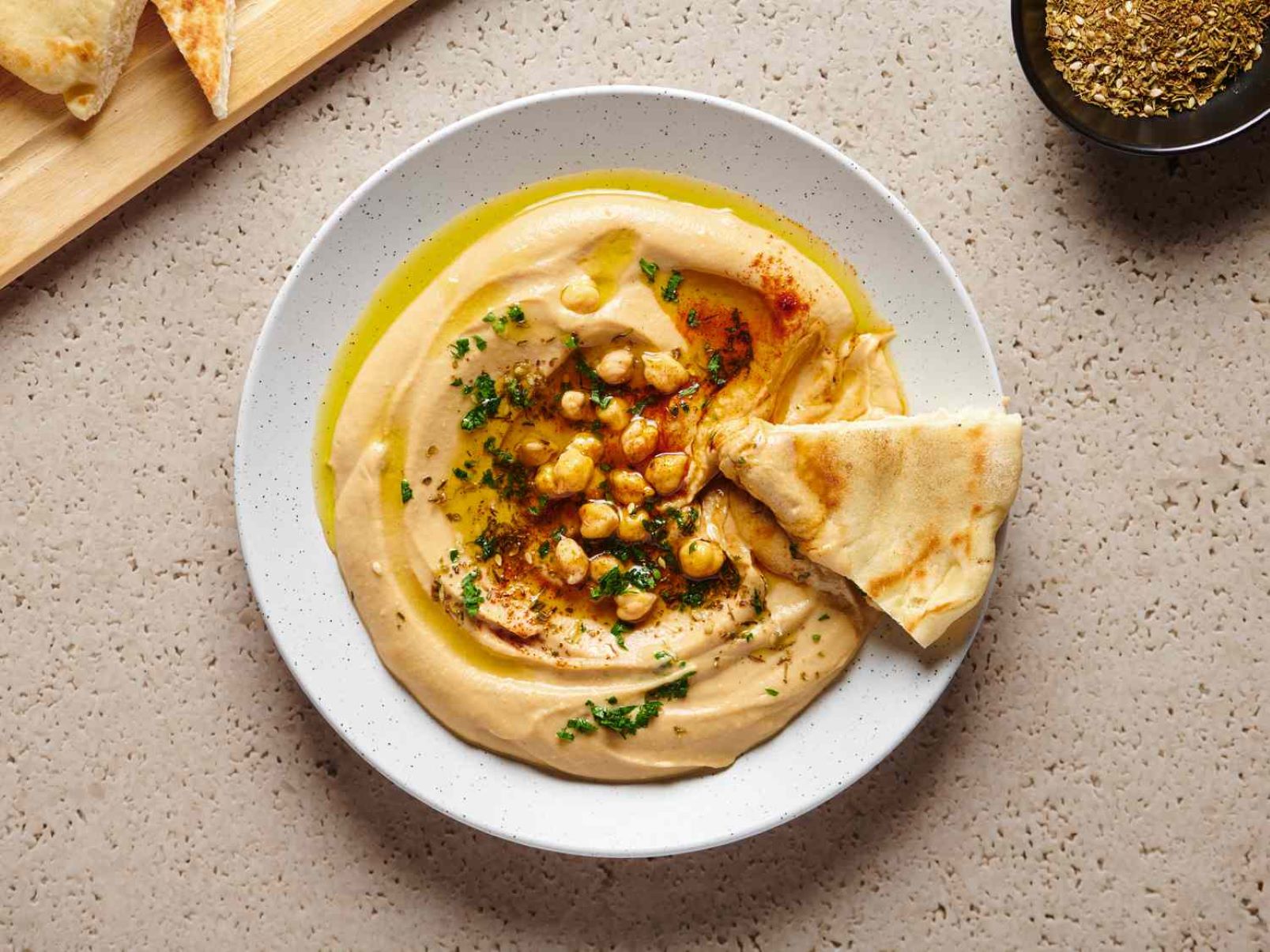Home>Food and Cooking>How To Make And Preserve Non-Alcoholic Ginger Beer: Ultimate Guide


Food and Cooking
How To Make And Preserve Non-Alcoholic Ginger Beer: Ultimate Guide
Published: January 9, 2024
Learn how to make and preserve non-alcoholic ginger beer with our ultimate guide. Discover expert tips and techniques for perfecting this refreshing beverage. Ideal for food and cooking enthusiasts.
(Many of the links in this article redirect to a specific reviewed product. Your purchase of these products through affiliate links helps to generate commission for Regretless.com, at no extra cost. Learn more)
Table of Contents
Introduction
Ginger beer is a beloved beverage with a rich history and a refreshing kick. While traditional ginger beer contains alcohol, non-alcoholic ginger beer offers the same delightful flavors without the boozy content. Whether you're a fan of zesty, spicy drinks or simply looking for a non-alcoholic alternative, making and preserving non-alcoholic ginger beer can be a rewarding and enjoyable experience.
In this ultimate guide, we will delve into the art of crafting non-alcoholic ginger beer, from understanding its ingredients and equipment to the fermentation process, bottling, and preserving. You'll also discover the best ways to serve and enjoy this invigorating beverage.
Join us on this journey as we unravel the secrets of creating and savoring the perfect non-alcoholic ginger beer. Whether you're a seasoned homebrewer or a curious newcomer to the world of homemade beverages, this guide is designed to equip you with the knowledge and skills to create a delicious and refreshing drink that will impress your taste buds and those of your friends and family.
What is Non-Alcoholic Ginger Beer?
Non-alcoholic ginger beer is a zesty and effervescent beverage that offers a tantalizing blend of ginger, sugar, and other flavor-enhancing ingredients. Unlike its alcoholic counterpart, non-alcoholic ginger beer provides the same bold and invigorating flavors without the presence of alcohol. This makes it an ideal choice for individuals seeking a refreshing and flavorful drink that can be enjoyed at any time of the day.
The process of making non-alcoholic ginger beer involves fermenting a mixture of ginger, sugar, and water, which creates a natural effervescence and a distinctive tangy flavor. The result is a beverage that boasts a perfect balance of sweetness and spiciness, making it a versatile and enjoyable drink for people of all ages.
Non-alcoholic ginger beer can be enjoyed on its own as a standalone refreshment or used as a base for creating delightful mocktails and cocktails. Its bold and complex flavor profile makes it a popular choice for mixing with other beverages to create unique and flavorful concoctions.
One of the key characteristics of non-alcoholic ginger beer is its versatility. It can be enjoyed as a standalone beverage, served over ice for a refreshing treat, or combined with other ingredients to craft a wide array of mocktails. Its bold and invigorating flavor makes it a perfect base for creating non-alcoholic cocktails that are both flavorful and satisfying.
In summary, non-alcoholic ginger beer is a delightful and versatile beverage that offers a harmonious blend of sweetness and spiciness. Its refreshing and invigorating qualities make it a popular choice for those seeking a non-alcoholic alternative with a bold and distinctive flavor. Whether enjoyed on its own or used as a base for creative mocktails, non-alcoholic ginger beer is a beloved beverage that continues to captivate the taste buds of enthusiasts around the world.
Ingredients and Equipment
To embark on the journey of making non-alcoholic ginger beer, it's essential to gather the right ingredients and equipment. The key components for crafting this invigorating beverage include fresh ginger, sugar, water, and flavor-enhancing ingredients. Additionally, specific equipment is required to facilitate the fermentation process and ensure the successful creation of non-alcoholic ginger beer.
Ingredients
-
Fresh Ginger: The heart and soul of non-alcoholic ginger beer, fresh ginger imparts the beverage with its distinctive spicy and aromatic flavors. When selecting ginger, opt for firm, unblemished roots to ensure optimal flavor and quality.
-
Sugar: A crucial component for the fermentation process, sugar serves as the food source for the yeast, allowing it to produce carbon dioxide and naturally carbonate the ginger beer. Both white and brown sugars can be used, each imparting subtle variations in flavor to the final product.
-
Water: High-quality water is essential for creating non-alcoholic ginger beer. It's important to use filtered or spring water to avoid any impurities that could impact the taste and clarity of the beverage.
-
Lemons: Freshly squeezed lemon juice adds a delightful citrusy brightness to the ginger beer, complementing the spicy notes of the ginger and enhancing the overall flavor profile.
-
Yeast: While non-alcoholic ginger beer doesn't produce significant levels of alcohol, yeast is still a vital component for the fermentation process. It helps create natural carbonation and contributes to the development of the beverage's complex flavors.
-
Flavor Enhancers: Additional flavor-enhancing ingredients, such as cloves, cinnamon, and allspice, can be incorporated to add depth and complexity to the ginger beer, creating a multi-dimensional taste experience.
Equipment
-
Large Pot: A sizable pot is essential for preparing the ginger beer base, allowing ample space for combining the ingredients and facilitating the initial cooking process.
-
Fermentation Vessel: A dedicated fermentation vessel, such as a glass or food-grade plastic container, is necessary for the fermentation stage. It should have a tight-sealing lid to allow the build-up of carbonation.
-
Strainer or Cheesecloth: To strain the ginger beer mixture and remove the solid ginger and other ingredients before bottling, a fine-mesh strainer or cheesecloth is required to achieve a clear and smooth beverage.
-
Bottles: Sturdy, airtight bottles suitable for carbonated beverages are essential for bottling the finished ginger beer. Swing-top glass bottles are a popular choice, as they effectively retain carbonation and allow for easy serving.
-
Funnel: A funnel facilitates the transfer of the ginger beer from the fermentation vessel to the bottles, minimizing spills and ensuring a smooth bottling process.
By gathering these essential ingredients and equipment, you'll be well-prepared to embark on the exciting journey of creating your own non-alcoholic ginger beer. With the right tools at your disposal, you can confidently proceed to the next steps of the brewing process, ultimately yielding a delicious and satisfying beverage that will delight your senses.
Making Non-Alcoholic Ginger Beer
The process of making non-alcoholic ginger beer is a delightful fusion of culinary art and scientific precision. It begins with the careful selection and preparation of the ingredients, followed by a series of steps that ultimately yield a vibrant and flavorful beverage. Here's a detailed overview of the process:
Step 1: Preparing the Ginger Beer Base
The journey starts with preparing the ginger beer base. Fresh ginger is peeled and finely grated to extract its spicy essence, which forms the foundation of the beverage's robust flavor. The grated ginger is then combined with water, sugar, and freshly squeezed lemon juice in a large pot. This aromatic mixture is gently heated, allowing the flavors to meld and infuse the liquid, creating a fragrant and zesty base.
Step 2: Cooling and Infusing
After the initial cooking process, the ginger beer base is left to cool, allowing the flavors to further develop and intertwine. This cooling period is crucial for achieving a harmonious balance of sweetness and spiciness, ensuring that the ginger beer boasts a complex and well-rounded flavor profile.
Step 3: Introducing the Yeast
Once the base has cooled to an appropriate temperature, yeast is introduced to initiate the fermentation process. The yeast consumes the sugar present in the mixture, releasing carbon dioxide and creating natural carbonation. This transformative stage not only imparts effervescence to the ginger beer but also contributes to the development of its distinctively tangy flavor.
Read more: The Ultimate Guide To Car Makes
Step 4: Allowing for Fermentation
The fermentation vessel, tightly sealed to contain the carbonation, is where the magic unfolds. The ginger beer base, now infused with yeast, is carefully transferred to the vessel, where it undergoes a period of fermentation. During this time, the yeast works its alchemical wonders, gradually transforming the liquid into a lively and effervescent beverage.
Step 5: Straining and Bottling
Once the fermentation process is complete, the ginger beer is strained to remove the solid ginger and other ingredients, resulting in a smooth and clear liquid. It's then delicately transferred into sturdy, airtight bottles using a funnel, ready to be sealed and preserved.
Step 6: Maturation and Carbonation
The bottled ginger beer is left to mature and carbonate, allowing the flavors to further develop and the carbonation to naturally infuse the beverage. This period of maturation is essential for achieving the perfect balance of flavors and carbonation, culminating in a refreshing and invigorating drink.
Embarking on the journey of making non-alcoholic ginger beer is a rewarding and enriching experience. By following these steps with care and precision, you can create a beverage that captivates the senses and delights the palate, offering a harmonious blend of sweet, spicy, and effervescent notes that are sure to leave a lasting impression.
Fermentation Process
The fermentation process is a pivotal stage in the creation of non-alcoholic ginger beer, where the magic of transformation unfolds. As the yeast is introduced to the ginger beer base, it initiates a remarkable alchemical journey that gives rise to the beverage's effervescence and complex flavor profile.
Once the ginger beer base, infused with the essential ingredients of ginger, sugar, water, and lemon juice, has been prepared and allowed to cool, it is time to introduce the yeast. The addition of yeast serves as a catalyst for the fermentation process, as it metabolizes the sugars present in the mixture, generating carbon dioxide and alcohol. In the case of non-alcoholic ginger beer, the goal is not to produce significant levels of alcohol but to harness the carbonation and flavor-enhancing properties of the yeast.
The fermentation vessel, a crucial component of this stage, provides the ideal environment for the yeast to work its transformative magic. As the ginger beer base, now enriched with the presence of yeast, is transferred into the vessel and sealed, the fermentation process commences. Over time, the yeast diligently consumes the sugars, releasing carbon dioxide and infusing the beverage with natural effervescence.
Throughout the fermentation period, the ginger beer undergoes a gradual metamorphosis, evolving from a still liquid into a lively and effervescent beverage. This transformative journey is characterized by the development of its distinctive tangy flavor, a result of the intricate interplay between the ginger, sugar, and yeast.
As the fermentation process unfolds, the vessel becomes a vessel of alchemical wonder, where the humble ingredients of ginger, sugar, and yeast converge to create a beverage with a vibrant and multi-dimensional flavor profile. The carbonation generated during this stage contributes to the refreshing effervescence that is characteristic of ginger beer, adding a delightful liveliness to each sip.
The fermentation process is a testament to the transformative power of natural processes, where the humble ingredients undergo a remarkable metamorphosis, culminating in the creation of a captivating and invigorating beverage. It is a stage that exemplifies the art and science of fermentation, yielding a non-alcoholic ginger beer that embodies the perfect harmony of sweet, spicy, and effervescent notes.
In summary, the fermentation process is a crucial chapter in the story of non-alcoholic ginger beer, where the yeast, in its silent and diligent work, orchestrates the creation of a beverage that captivates the senses and delights the palate.
Bottling and Preserving
After the fermentation process has worked its magic and the non-alcoholic ginger beer has matured to perfection, it's time to capture its effervescence and vibrant flavors through the bottling and preserving stage. This crucial phase ensures that the ginger beer retains its refreshing qualities and can be enjoyed at leisure, whether as a standalone beverage or as a key ingredient in tantalizing mocktails.
The bottling process begins with the careful transfer of the ginger beer from the fermentation vessel into sturdy, airtight bottles. It's essential to select bottles specifically designed for carbonated beverages, such as swing-top glass bottles, as they effectively retain the natural carbonation and preserve the beverage's invigorating qualities. A funnel is used to facilitate the transfer, minimizing spills and ensuring a smooth bottling process.
Once the ginger beer is securely bottled, it enters the realm of preservation, where it awaits its moment to shine. Proper preservation is crucial for maintaining the beverage's quality and ensuring that its delightful flavors are preserved for an extended period. The airtight seal of the bottles serves as a protective barrier, safeguarding the ginger beer from external contaminants and maintaining its natural carbonation.
To further enhance the preservation process, the bottled ginger beer is stored in a cool, dark place, away from direct sunlight and extreme temperatures. This optimal storage environment helps prolong the beverage's shelf life and preserves its refreshing effervescence, allowing it to be enjoyed at its best.
As the ginger beer undergoes the preservation phase, it continues to mature and develop its flavors, achieving a harmonious balance of sweetness, spiciness, and effervescence. This period of maturation is essential for allowing the beverage to reach its full potential, ensuring that each sip delivers a delightful and invigorating experience.
The bottling and preserving stage marks the culmination of the ginger beer's journey, preserving its captivating qualities and setting the stage for the ultimate enjoyment. With the careful sealing and storage of the bottles, the non-alcoholic ginger beer is poised to be savored at leisure, offering a refreshing and flavorful beverage that captivates the senses and leaves a lasting impression.
In summary, the bottling and preserving stage is a pivotal chapter in the story of non-alcoholic ginger beer, ensuring that its vibrant flavors and natural effervescence are safeguarded, ready to be uncorked and enjoyed at any moment.
Serving and Enjoying
Serving and enjoying non-alcoholic ginger beer is a delightful experience that offers a myriad of possibilities for savoring its invigorating flavors. Whether enjoyed on its own as a standalone refreshment or used as a key ingredient in creative mocktails, non-alcoholic ginger beer presents a versatile and satisfying beverage that captivates the senses.
When it comes to serving non-alcoholic ginger beer, simplicity often reigns supreme. Pouring the chilled ginger beer into a tall glass over ice allows its refreshing effervescence to take center stage. The gentle release of bubbles and the enticing aroma of ginger create an inviting sensory experience that sets the stage for a delightful indulgence.
For those seeking a more adventurous approach, non-alcoholic ginger beer serves as an excellent base for crafting a variety of mocktails. By combining it with complementary ingredients such as fresh citrus juices, aromatic herbs, or fruit garnishes, you can create mocktail concoctions that elevate the ginger beer's zesty flavors to new heights. Whether it's a zingy ginger beer mojito or a tangy ginger beer punch, the possibilities for creative mocktail combinations are endless.
The versatility of non-alcoholic ginger beer extends to its ability to complement a wide range of cuisines and dishes. Its spicy and aromatic profile makes it an ideal accompaniment to savory dishes, particularly those with bold and robust flavors. Whether paired with spicy Asian stir-fries, tangy barbecue dishes, or flavorful grilled meats, non-alcoholic ginger beer adds a refreshing and palate-cleansing element to the dining experience.
In social settings, non-alcoholic ginger beer shines as a crowd-pleaser, offering a non-alcoholic alternative that doesn't compromise on flavor. Whether served at gatherings, picnics, or barbecues, its vibrant and effervescent qualities make it a refreshing choice for guests of all ages. Its ability to stand alone as a satisfying refreshment or mingle harmoniously with other ingredients in mocktails ensures that it remains a versatile and popular choice for any occasion.
Ultimately, the enjoyment of non-alcoholic ginger beer transcends mere refreshment; it embodies a harmonious blend of flavors, aromas, and textures that stimulate the senses and elevate the drinking experience. Whether relished in solitude or shared with friends and family, non-alcoholic ginger beer offers a refreshing and invigorating journey for the palate, inviting all who partake to savor its delightful nuances and vibrant character.
Conclusion
In conclusion, the art of making and preserving non-alcoholic ginger beer is a captivating journey that blends culinary craftsmanship with the transformative power of natural fermentation. From the careful selection of fresh ginger and essential ingredients to the meticulous orchestration of the fermentation process, each step in creating non-alcoholic ginger beer is a testament to the art and science of beverage crafting.
The process of making non-alcoholic ginger beer is a harmonious fusion of flavors, where the zesty essence of ginger, the sweetness of sugar, and the aromatic brightness of lemon intertwine to create a beverage that captivates the senses. Through the alchemical magic of fermentation, the humble ingredients undergo a remarkable metamorphosis, yielding a non-alcoholic ginger beer that boasts a vibrant and multi-dimensional flavor profile.
The bottling and preserving stage serves as the gateway to enjoying the fruits of this labor, ensuring that the ginger beer's effervescence and invigorating qualities are safeguarded for leisurely indulgence. Whether savored on its own over ice or used as a base for creative mocktails, non-alcoholic ginger beer offers a versatile and satisfying beverage that leaves a lasting impression.
The ultimate enjoyment of non-alcoholic ginger beer transcends mere refreshment; it embodies a harmonious blend of flavors, aromas, and textures that stimulate the senses and elevate the drinking experience. Its ability to complement a wide range of cuisines and dishes makes it a versatile addition to any dining occasion, while its refreshing qualities make it a crowd-pleasing choice for gatherings and social events.
In essence, non-alcoholic ginger beer stands as a testament to the artistry and ingenuity of homemade beverages, offering a delightful and invigorating alternative that captivates the taste buds and leaves a lasting impression. Whether relished in solitude or shared with friends and family, non-alcoholic ginger beer invites all who partake to savor its delightful nuances and vibrant character, making it a beloved beverage that continues to captivate enthusiasts around the world.












